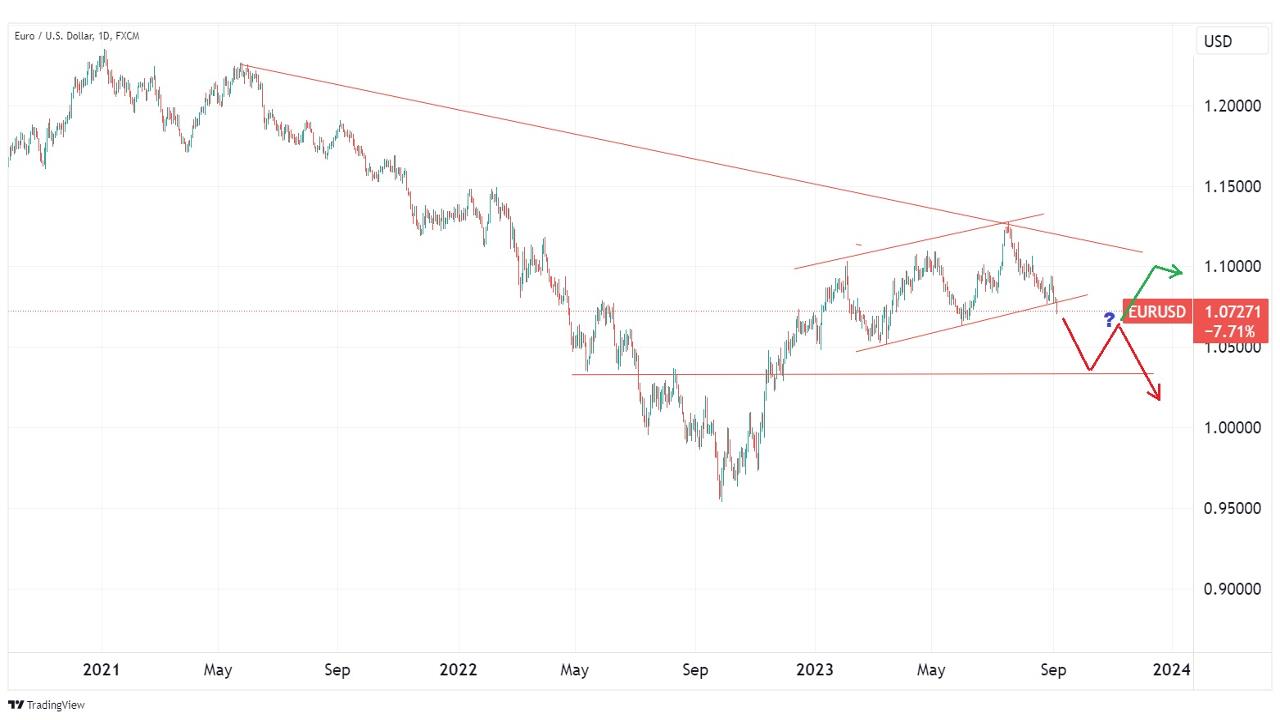Video:
Take our online poll:
AI Analysis:
The pricing of the Euro (EUR) in foreign exchange markets can be influenced by a variety of risks and factors. These factors can cause the exchange rate of the Euro to fluctuate against other currencies like the US Dollar (USD). Here are some key risks that can impact Euro pricing:
1) Interest Rates: Central bank interest rate decisions, such as those made by the European Central Bank (ECB), can significantly affect the Euro's value. Higher interest rates tend to attract foreign capital looking for better returns, which can strengthen the Euro, while lower rates can weaken it.
2) Economic Data: Economic indicators like GDP growth, inflation, employment figures, and trade balances can influence market perceptions of the Eurozone's economic health. Strong economic data can boost the Euro, while weak data can lead to depreciation.
3) Political Events: Political instability, elections, and changes in government can introduce uncertainty into the currency markets. Political events in Eurozone countries can impact the Euro's value.
4) Brexit: The United Kingdom's decision to leave the European Union (Brexit) introduced significant uncertainty into the Euro's pricing, as it affects trade relationships and economic ties.
5) Trade Relations: Trade tensions or agreements between the Eurozone and major trading partners, such as the United States or China, can impact the Euro's value. Tariffs and trade disputes can lead to currency fluctuations.
6) Market Sentiment: Traders' perceptions of risk and sentiment can drive short-term fluctuations in the Euro's value. Factors such as geopolitical tensions, investor sentiment, and market speculation can influence currency markets.
7) Global Economic Conditions: The overall health of the global economy can impact the Euro. Economic crises, recessions, or global financial instability can lead to capital flows into or out of the Eurozone, affecting the currency's value.
8) Monetary Policy: The monetary policies of other major central banks, such as the US Federal Reserve, can influence the Euro's value. Divergent policies, such as when one central bank raises interest rates while another lowers them, can lead to currency movements.
9) Currency Interventions: Some governments or central banks may engage in currency interventions to influence their currency's value. These interventions can impact the Euro if they involve the Eurozone's major trading partners.
10) Natural Disasters and Geopolitical Events: Unforeseen events like natural disasters, terrorist attacks, or geopolitical conflicts can lead to sudden shifts in currency markets as investors seek safe-haven assets.
It's important to note that currency markets are highly complex, and the exchange rate of the Euro can be influenced by a combination of these factors. Traders, investors, and financial institutions closely monitor these risks and factors to make informed decisions regarding Euro pricing.
Chart:

References:


Comments